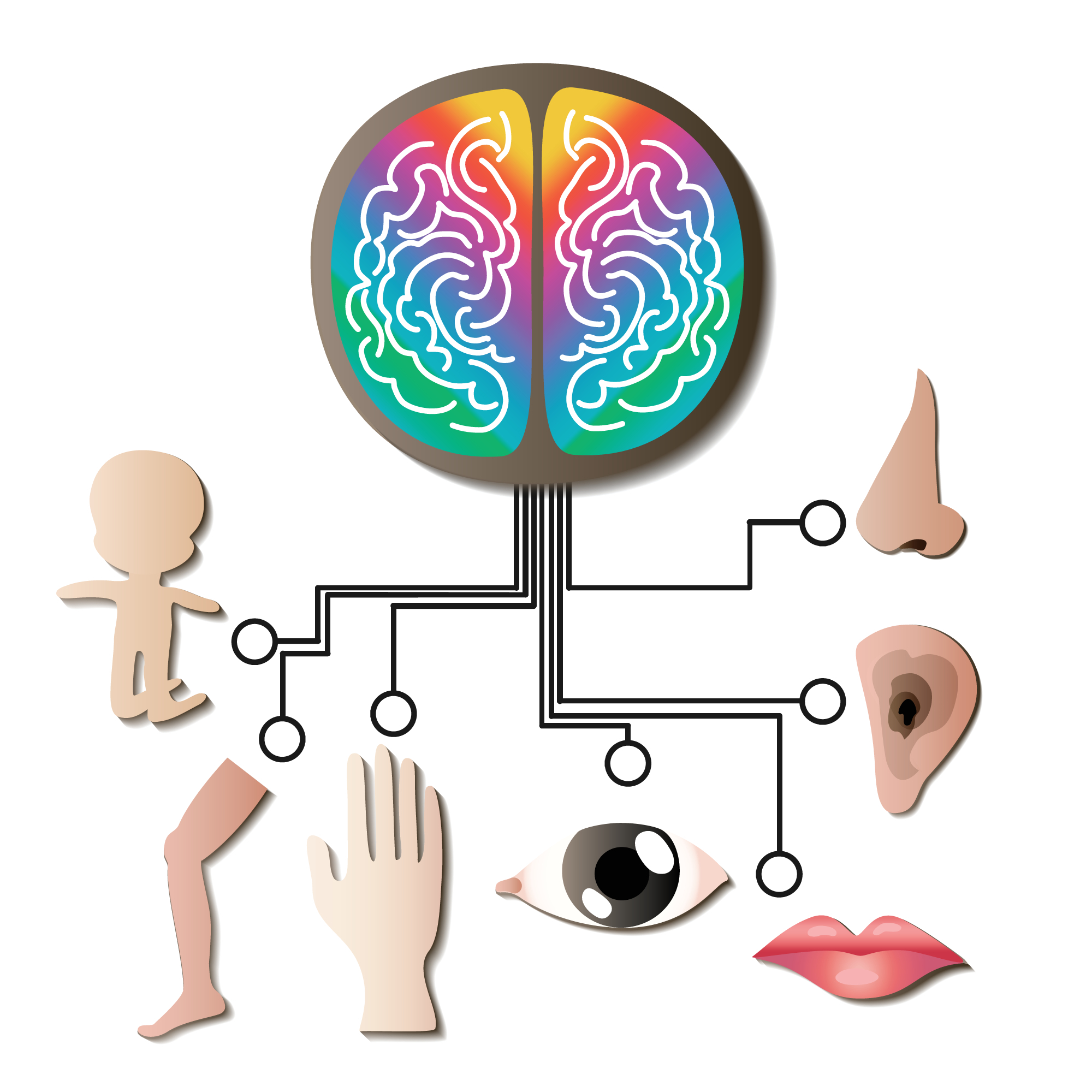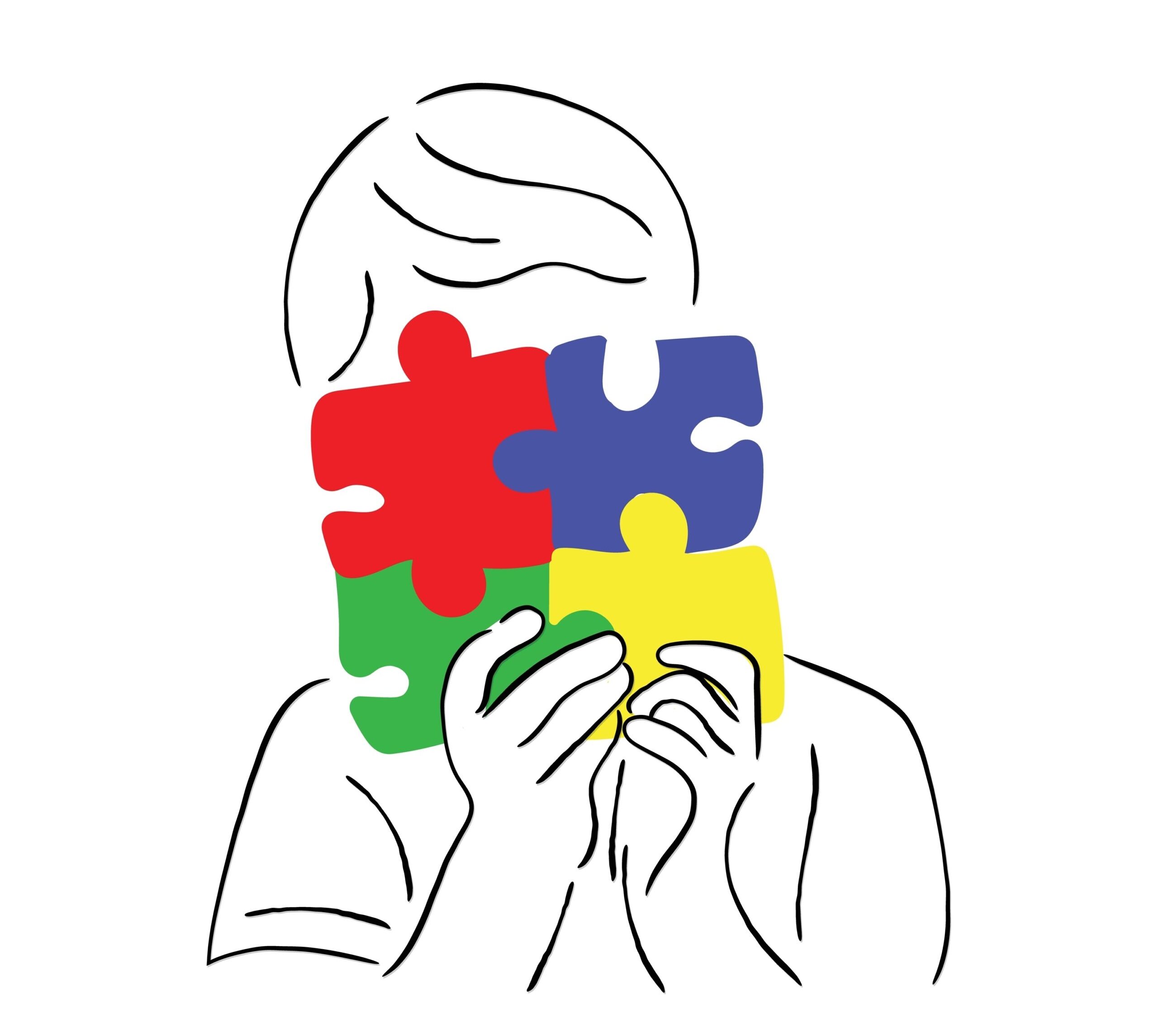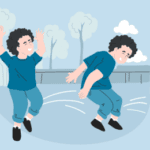
Sensory Processing Disorder
- Signs and Symptoms of Sensory Processing Disorder in Children
- Sensory Processing Disorder in Teens: Signs, Symptoms, Diagnosis & Treatment
- Sensory Processing Disorder (SPD) in Adults: Signs, Diagnosis, Treatment & Coping Strategies
- Types of Sensory Processing Disorder (SPD): Symptoms, Characteristics & Treatment
- Sensory Processing Disorder Treatment Options & Best Therapies for SPD in Children and Adults
- Living with Sensory Processing Disorder: Daily Tips, Support Strategies, and Family Guidance
- Vestibular and Proprioceptive Processing in Sensory Processing Disorder (SPD)
- Causes and Risk Factors of Sensory Processing Disorder (SPD): What Science Knows
- How Is Sensory Processing Disorder Diagnosed? Tests, Signs, and Evaluation Tools
- Stimming Behaviors in Sensory Processing Disorder: What They Are and Why They Matter
- Sensory Processing Disorder and Learning: How Sensory Challenges Affect Education
- Sensory Diet Strategies for Kids: Effective Tools for Sensory Regulation
- Sensory Integration Disorder and Sensory Integration Therapy
- Sensory Discrimination Disorder
- Sensory Modulation Disorder: Symptoms, Subtypes, and Treatment Strategies
- Sensory Over-Responsivity (SOR): Signs, Causes, and How to Help Kids and Adults Cope
- Sensory Under-Responsivity: Signs, Causes, and Support for Children and Adults
- Sensory-Based Motor Disorder: Signs, Symptoms, and Effective Treatments for Children and Adults
- Visual Processing Disorder: Signs, Symptoms & How to Support Visual Learning Challenges
- Auditory Processing Disorder (APD): Symptoms, Diagnosis & Treatment for Children and Adults
- Sensory Seeking/Craving: Understanding, Identifying, and Supporting Sensory Seekers
- Dyspraxia (Developmental Coordination Disorder): Understanding SBMD and Its Impact
- Postural Disorder: Causes, Symptoms & Treatment | Sensory-Based Motor Disorder Guide
Types of Sensory Processing Disorder (SPD): Symptoms, Characteristics & Treatment

Authored by: The DrSensory Editorial Team
Reviewed by: 🛡️ DrSensory Clinical Review Board
Last updated: June 2025
- Understanding Sensory Discrimination Disorder: Symptoms and Impact
- What Is Sensory-Based Motor Disorder (SBMD) and Its Effects?
- How Do SPD Types Differ from Autism Spectrum Disorder?
- Can Adults Have Different Types of SPD?
- What Treatment Options Are Best for Each Type of Sensory Processing Disorder?
- How Can Parents and Caregivers Identify SPD Types in Children?
- What Are Some Less Common Types of Sensory Processing Disorder?
- How Does Auditory Processing Disorder (APD) Relate to Sensory Processing Disorder?
- What Is Visual Processing Disorder (VPD) and How Does It Overlap with SPD?
- Can Someone Have More Than One Sensory Processing Disorder Type at the Same Time?
- How Are Overlapping Sensory Conditions Diagnosed and Treated?
What Are the Main Types of Sensory Processing Disorder?
Sensory Processing Disorder is broadly categorized into three main types: Sensory Modulation Disorder, Sensory Discrimination Disorder, and Sensory-Based Motor Disorder. Each type affects how the brain processes sensory information, leading to unique symptoms and challenges. Understanding these types helps guide accurate diagnosis and personalized treatment plans.
What Is Sensory Modulation Disorder (SMD) and How Does It Affect Individuals?
Sensory Modulation Disorder is characterized by difficulty regulating sensory input, leading to over-responsiveness (hypersensitivity), under-responsiveness (hyposensitivity), or sensory seeking behaviors. This section explains common signs, such as being easily overwhelmed by noise or constantly seeking tactile stimulation, and discusses strategies for management.
Sensory Modulation Disorder: Symptoms, Subtypes, and Treatment Strategies
Sensory Seeking/Craving: Understanding, Identifying, and Supporting Sensory Seekers
Sensory Over-Responsivity (SOR): Signs, Causes, and How to Help Kids and Adults Cope
Sensory Under-Responsivity: Signs, Causes, and Support for Children and Adults
Understanding Sensory Discrimination Disorder: Symptoms and Impact
Sensory Discrimination Disorder involves challenges in interpreting sensory information accurately. People may struggle to distinguish between textures, sounds, or spatial orientation, affecting tasks like handwriting, balance, or body awareness. Learn how this SPD type impacts everyday functioning and recommended therapies.
Sensory Discrimination Disorder
Types of Sensory Processing Disorder (SPD): Symptoms, Characteristics & Treatment
What Is Sensory-Based Motor Disorder (SBMD) and Its Effects?
Sensory-Based Motor Disorder includes two subtypes: postural disorder and dyspraxia. It affects coordination, balance, and motor planning. This section covers typical symptoms such as clumsiness, difficulty with fine motor tasks, and challenges in sports, along with effective occupational therapy approaches.
Sensory-Based Motor Disorder: Signs, Symptoms, and Effective Treatments for Children and Adults
Postural Disorder: Causes, Symptoms & Treatment | Sensory-Based Motor Disorder Guide
Dyspraxia (Developmental Coordination Disorder): Understanding SBMD and Its Impact
How Do SPD Types Differ from Autism Spectrum Disorder?
While SPD and autism share some sensory symptoms, they are distinct conditions. This FAQ explains the key differences between SPD types and autism sensory profiles, helping readers understand diagnosis and treatment options.
Types of Sensory Processing Disorder (SPD): Symptoms, Characteristics & Treatment
Sensory Processing and Autism: Understanding Sensitivities, Overload & Effective Therapies
Can Adults Have Different Types of SPD?
SPD types can present differently in adults compared to children. This section highlights how sensory modulation, discrimination, and motor disorders manifest in adult life, including workplace and social challenges.
Sensory Processing Disorder (SPD) in Adults: Signs, Diagnosis, Treatment & Coping Strategies
Sensory Processing Disorder Treatment Options & Best Therapies for SPD in Children and Adults
Asperger’s Syndrome: Signs, Diagnosis, and Support for Children, Teens & Adults
What Treatment Options Are Best for Each Type of Sensory Processing Disorder?
Treatment varies based on the SPD type and individual needs. Explore sensory integration therapy, motor skill development exercises, and behavioral strategies tailored to modulation, discrimination, or motor-related SPD.
Sensory Integration Disorder and Sensory Integration Therapy
Sensory Modulation Disorder: Symptoms, Subtypes, and Treatment Strategies
Sensory Discrimination Disorder
Postural Disorder: Causes, Symptoms & Treatment | Sensory-Based Motor Disorder Guide
How Can Parents and Caregivers Identify SPD Types in Children?
Early identification of SPD types helps with timely intervention. This section offers practical tips for recognizing signs of different SPD types in children and when to seek professional evaluation.
Types of Sensory Processing Disorder (SPD): Symptoms, Characteristics & Treatment
Sensory Processing Disorder Treatment Options & Best Therapies for SPD in Children and Adults
What Are Some Less Common Types of Sensory Processing Disorder?
While most individuals with SPD experience the three main types—sensory modulation, sensory discrimination, and sensory-based motor disorder—there are rarer variations that affect specific sensory systems uniquely. For example, some people may have isolated difficulties with auditory or visual processing that don’t fit neatly into the primary SPD categories. These less common types often require specialized assessment and treatment tailored to the affected sensory modality.
Sensory Modulation Disorder: Symptoms, Subtypes, and Treatment Strategies
Sensory Discrimination Disorder
Postural Disorder: Causes, Symptoms & Treatment | Sensory-Based Motor Disorder Guide
How Does Auditory Processing Disorder (APD) Relate to Sensory Processing Disorder?
Auditory Processing Disorder (APD) is a condition where the brain has trouble interpreting sounds despite normal hearing ability. While APD shares symptoms with SPD, such as difficulty filtering background noise or following verbal instructions, it specifically affects the auditory system. Many individuals with SPD also experience APD symptoms, leading to an overlap that can complicate diagnosis and treatment. Understanding this overlap helps clinicians develop comprehensive therapy plans addressing both auditory and multi-sensory processing challenges.
Auditory Processing Disorder (APD): Symptoms, Diagnosis & Treatment for Children and Adults
What Is Visual Processing Disorder (VPD) and How Does It Overlap with SPD?
Visual Processing Disorder (VPD) involves difficulties interpreting and organizing visual information, which can affect reading, spatial awareness, and coordination. Like APD, VPD may co-occur with Sensory Processing Disorder, particularly in individuals who struggle with sensory discrimination. The overlapping symptoms can include trouble tracking moving objects, difficulty distinguishing colors or shapes, and challenges with eye-hand coordination. Addressing both SPD and VPD is crucial for improving functional outcomes in affected individuals.
Visual Processing Disorder: Signs, Symptoms & How to Support Visual Learning Challenges
Can Someone Have More Than One Sensory Processing Disorder Type at the Same Time?
Yes, it is common for individuals to experience symptoms from multiple SPD types concurrently. For example, a person might have sensory modulation difficulties causing hypersensitivity to touch alongside sensory-based motor challenges affecting coordination. Co-occurring SPD types can intensify the impact on daily life, making personalized, multidisciplinary treatment approaches essential for effective management.
Sensory Over-Responsivity (SOR): Signs, Causes, and How to Help Kids and Adults Cope
Sensory Under-Responsivity: Signs, Causes, and Support for Children and Adults
Postural Disorder: Causes, Symptoms & Treatment | Sensory-Based Motor Disorder Guide
How Are Overlapping Sensory Conditions Diagnosed and Treated?
Diagnosis of overlapping sensory conditions involves comprehensive evaluations by multidisciplinary teams, including occupational therapists, audiologists, and neuropsychologists. Assessment tools like the Sensory Profile, auditory processing tests, and vision assessments help identify the specific combination of sensory challenges. Treatment plans are then customized, often combining sensory integration therapy, auditory training, vision therapy, and behavioral strategies to address the full spectrum of needs.
Auditory Processing Disorder (APD): Symptoms, Diagnosis & Treatment for Children and Adults
Visual Processing Disorder: Signs, Symptoms & How to Support Visual Learning Challenges
This page provides general educational content and is not a substitute for professional medical advice. Always consult a licensed provider for diagnosis and treatment.
View privacy policy, copyright and trust info
More on SPD

- Signs and Symptoms of Sensory Processing Disorder in Children
- Sensory Processing Disorder in Teens: Signs, Symptoms, Diagnosis & Treatment
- Sensory Processing Disorder (SPD) in Adults: Signs, Diagnosis, Treatment & Coping Strategies
- Types of Sensory Processing Disorder (SPD): Symptoms, Characteristics & Treatment
- Sensory Processing Disorder Treatment Options & Best Therapies for SPD in Children and Adults
- Living with Sensory Processing Disorder: Daily Tips, Support Strategies, and Family Guidance
- Vestibular and Proprioceptive Processing in Sensory Processing Disorder (SPD)
- Causes and Risk Factors of Sensory Processing Disorder (SPD): What Science Knows
- How Is Sensory Processing Disorder Diagnosed? Tests, Signs, and Evaluation Tools
- Stimming Behaviors in Sensory Processing Disorder: What They Are and Why They Matter
- Sensory Processing Disorder and Learning: How Sensory Challenges Affect Education
- Sensory Diet Strategies for Kids: Effective Tools for Sensory Regulation
- Sensory Integration Disorder and Sensory Integration Therapy
- Sensory Discrimination Disorder
- Sensory Modulation Disorder: Symptoms, Subtypes, and Treatment Strategies
- Sensory Over-Responsivity (SOR): Signs, Causes, and How to Help Kids and Adults Cope
- Sensory Under-Responsivity: Signs, Causes, and Support for Children and Adults
- Sensory-Based Motor Disorder: Signs, Symptoms, and Effective Treatments for Children and Adults
- Visual Processing Disorder: Signs, Symptoms & How to Support Visual Learning Challenges
- Auditory Processing Disorder (APD): Symptoms, Diagnosis & Treatment for Children and Adults
- Sensory Seeking/Craving: Understanding, Identifying, and Supporting Sensory Seekers
- Dyspraxia (Developmental Coordination Disorder): Understanding SBMD and Its Impact
- Postural Disorder: Causes, Symptoms & Treatment | Sensory-Based Motor Disorder Guide
Find a Therapist near you
Are you looking for a physical, occupational, or speech therapist in your area?
Look no further than the DrSensory Therapist Database and Clinic Directory!
Find a Therapist
Find the physical therapist, occupational therapist, or speech language pathologist you’re looking for!
Ask Us Anything
Whether you are looking for advice, have a general question about sensory processing, or looking for resources.
Submit Your Story
Share your story about your child. Let’s celebrate milestones and learn more about challenges.













































































